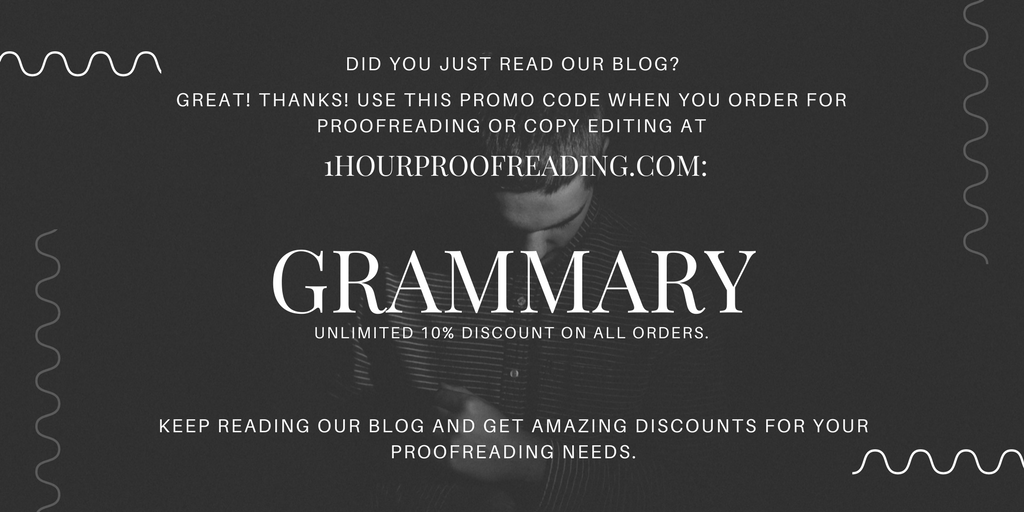Writing Hacks: Discover Your Next Great Poem
Posted on Nov 07, 2017
Back when there was no Twitter with its 140-character limit, Facebook with its “What’s on your mind?” and Instagram with its pretty pictures and witty captions, we lived through all sorts of poems that talked about how we felt and how we saw things in our daily lives. Up until today, poetry thrives on as a platform where one can fully express one’s feelings and ideas.

Poetry is a form of literature that is meant to convey one’s ideas, feelings, events, and experiences through the use of various literary techniques, such as meter, metaphor, rhyme, sound symbolism, and phonaesthetics.
Poems come in many different forms. A normal reader might not be so concerned on how these poems differ by type. Nonetheless, categorizing these poems has helped poets establish an orderly and impactful construction for their compositions. The art in poetry lies not only in its meanings but also in its witty form and structure.
Over the years, poets, linguists, and literary scholars have categorized poetry into several forms. They are mostly categorized by the usage of words in the poem, the rhyming patterns, and the number of lines in the poem.
From this point onward, we will now discuss several types of poems: their form, structure, examples, and meanings. You don’t have to worry about getting bored; instead, use this as an excuse to read through a collection of beautiful and heartwarming poems, categorized in their own forms.
Allegory
Time, Real and Imaginary
by
Samuel Taylor ColeridgeOn the wide level of a mountain’s head
(I knew not where, but ’twas some faery place),
Their ’pinions, ostrich-like, for sails outspread,
Two lovely children run an endless race,
A sister and a brother!
This far outstripp’d the other;
Yet ever runs she with reverted face,
And looks and listens for the boy behind:
For he, alas! is blind!
O’er rough and smooth with even step he pass’d,
And knows not whether he be first or last.First on our list is the allegory poem. Used mostly as a literary device, allegory presents real-life issues and occurrences in a metaphorical sense. An allegory conveys hidden meanings through the use of symbolic figures, actions, imagery, and events. Many literary works have been categorized as an allegory, but the broad sense of allegory’s definition makes it hard to say whether they are intended or not by the author.
The main purpose of an allegory poem is to create a comprehensible image that is striking to its readers and listeners. Unlike other poetry forms that can be recognized easily through its syllabic meter and rhyming pattern, an allegory form is more related to the poem’s meaning and to what the author truly wishes to convey.
Ballad
Annabel Lee
by
Edgar Allan PoeIt was many and many a year ago,
In a kingdom by the sea,
That a maiden there lived whom you may know
By the name of Annabel Lee;
And this maiden she lived with no other thought
Than to love and be loved by me.
I was a child and she was a child,
In this kingdom by the sea,
But we loved with a love that was more than love—
I and my Annabel Lee—
With a love that the winged seraphs of Heaven
Coveted her and me.
And this was the reason that, long ago,
In this kingdom by the sea,
A wind blew out of a cloud, chilling
My beautiful Annabel Lee;
So that her highborn kinsmen came
And bore her away from me,
To shut her up in a sepulchre
In this kingdom by the sea.
The angels, not half so happy in Heaven,
Went envying her and me—
Yes!—that was the reason (as all men know,
In this kingdom by the sea)
That the wind came out of the cloud by night,
Chilling and killing my Annabel Lee.
But our love it was stronger by far than the love
Of those who were older than we—
Of many far wiser than we—
And neither the angels in Heaven above
Nor the demons down under the sea
Can ever dissever my soul from the soul
Of the beautiful Annabel Lee;
For the moon never beams, without bringing me dreams
Of the beautiful Annabel Lee;
And the stars never rise, but I feel the bright eyes
Of the beautiful Annabel Lee;
And so, all the night-tide, I lie down by the side
Of my darling—my darling—my life and my bride,
In her sepulchre there by the sea—
In her tomb by the sounding sea.Upon hearing the word ballad, you might have imagined all those famous ballads by Ed Sheeran and Adele, but who said ballads weren’t a thing in the past as well? Ballads as we know them today are also how they were meant to be centuries ago: they are poems that tell a love story, and yes, they are the kind that are suitable for a melodic accompaniment.
Ballad poems are often used in songs because of their structure and their rhyming pattern. They are alternating lines of four and three beats, often in quatrains, and with the rhyming pattern ABAB. The common measure in ballads is mostly an alternate sequence of four and three stresses, which makes them more suitable to use with hymns.
Ballads are famous for telling a story, and because ballads have a basic and familiar structure, they are the kind of poems that readers are more acquainted with.
Elegy
Because I Could Not Stop for Death
by
Emily DickinsonBecause I could not stop for death
He kindly stopped for me
The carriage held but just ourselves
And immortality
We slowly drove—he knew no haste
And I had put away
My labor and my leisure, too
For his civility
We passed the school, where children strove
At recess, in the ring
We passed the fields of gazing grain
We passed the setting sun
Or rather, he passed us
The Dews drew quivering and chill
For only gossamer, my gown
My tippet, only tulle
We paused before a house that seemed
A swelling of the ground
The roof was scarcely visible
The cornice, in the ground
Since then—’tis centuries—and yet
Feels shorter than the day
I first surmised the horses’ heads
Were toward eternityJust because it’s sad doesn’t mean it’s not beautiful. Sadness is not a feeling that anyone wants to have, but it can’t be denied that grief and sadness have inspired some of the most beautiful and famous literary works out there.
Elegy has a tone of sadness in it, and it is written to express grief and admiration of someone who died. Eulogy and elegy differ only by mere definition: eulogy being a speech and elegy being in the form a written poem.
More than telling stories, most elegies are focused more on expressing one’s sad feelings over someone who passed away. However, some elegies are not limited to mourning the loss of a loved one. Rather than solely focusing on death, elegies sometimes talk about different stories that are centered on the different kinds of sadness that one may experience.
Epic
Paradiso (lines 94-105 of Canto II)
by
Dante AlighieriYet an experiment, were you to try it,
Could free you from your cavil and the source
Of your arts’ course springs from experiment.
Taking three mirrors, place a pair of them
At equal distance from you; set the third
Midway between those two, but farther back.
Then, turning toward them, at your back have placed
A light that kindles those three mirrors and
Returns to you, reflected by them all.
Although the image in the farthest glass
Will be of lesser size, there you will see
That it must match the brightness of the rest.An epic tells a story of a hero, and some of the most famous examples of epic poetry include the Ancient Greek Odyssey and Dante’s Divine Comedy.
Epics have an old history, and their structure varies from one country to another. In Latin and classical Greek, epic poems are in dactylic hexameter, the standard epic meter made up of a metrical line of verses consisting of six feet. Meanwhile, Norse, German, and Old English epic poems are usually without rhyme but are in alliterative verse, a form of verse that uses alliteration in determining the underlying metrical structure of the poem.
Epics are lengthy narrative in the form of poems, and through the use of a central heroic figure in the whole story, epics usually tell an underlying series of relevant episodes contributing to a nation’s culture and history.
Free Verse or Narrative
Fantasy or Life
by
Vivian Gilbert ZabelSo often you say you love me,
Yet you seemingly don’t know
I cannot live in fantasy’s fog,
Always in the blurred drug of dreams.
I need the clear, crisp light
Found in reality’s realm of day,
Not the darkness of mere existence.Well, who doesn’t love a poem that has no set of rules, but when writing a free-verse poem, if you think that all you have to do is weave your words in a way that would make sense, then you are clearly underestimating all free-verse poems out there.
Free-verse poems are, indeed, free but not totally. These kinds of poems are only ever free “from the tyrant demands of the metered line,” but poets argue that free-verse poems also have their own restrictions.
Some consider free-verse poems as a modern kind of poetry, but actually, they have been around in the classic years of literature. Most people can relate more to free-verse poems because these poems are simple and tend to follow the rhythm of people’s natural speech. They do not require syllabic meter, rhymes, and other poetic techniques, but a free verse or a narrative poem still follows some kind of structure that is dependent on the author of the poem himself.
Haiku
A Haiku by Matsuo BashoAn old silent pond . . .
A frog jumps into the pond,
splash! Silence again.A haiku is composed of three lines: the first line having five syllables, the second line having seven, and the third and last line having another five. It is a Japanese form of poetry, but that doesn’t mean non–Japanese-speaking people aren’t allowed to create great haiku compositions. In fact, a British schoolgirl Gracie Starkey, 14, from Gloucestershire, has just been named as the first ever non-Japanese winner of a haiku contest organized annually by a Japanese tea company.
Her haiku went like this:
Freshly mown grass
clinging to my shoes
my muddled thoughtsIt didn’t exactly follow the traditional five-seven-five composition, but out of all 18,248 English entries for the haiku competition, hers was chosen as the winning piece.
Limerick
There Was a Young Lady of Hull
by
Edward LearThere was a Young Lady of Hull,
Who was chased by a virulent bull;
But she seized on a spade,
And called out, “Who’s afraid?”
Which distracted that virulent bull.The limerick form of poetry was said to have appeared first in England in the early years of the eighteenth century. English poet Edward Lear popularized this form in the nineteenth century, and he even published a book titled A Book of Nonsense, a volume of limericks that had three editions, which helped popularize the form and genre of literary nonsense.
A limerick has a strict rhyme scheme AABBA, and it often portrays humorous and sometimes obscene scenarios in the poem. It is only five lines short, and the third and fourth lines are shorter than the other three lines.
Usually, the first line traditionally introduces a person, and a place follows the introduction to first establish the setting of the poem. The first line also determines the rhyme scheme that the second and fifth lines will follow. In the older versions of limericks, the last line is often a repetition of the first line.
Sonnet
Sonnet 130
by
William ShakespeareMy mistress’ eyes are nothing like the sun;
Coral is far more red than her lips’ red;
If snow be white, why then her breasts are dun;
If hairs be wires, black wires grow on her head.
I have seen roses damasked, red and white,
But no such roses see I in her cheeks;
And in some perfumes is there more delight
Than in the breath that from my mistress reeks.
I love to hear her speak, yet well I know
That music hath a far more pleasing sound;
I grant I never saw a goddess go;
My mistress when she walks treads on the ground.
And yet, by heaven, I think my love as rare
As any she belied with false compare.“Shall I compare thee to a summer’s day?” This famous first line of “Sonnet 18” by William Shakespeare just never gets old. A sonnet is a poem composed of fourteen lines, which follows a strict rhyme scheme and a specific structure. It is written in iambic pentameter, a commonly used type of metrical line in the traditional English poetry and drama verse.
There are two kinds of sonnets: the Petrarchan sonnet and the Shakespearean sonnet.
The Petrarchan sonnet, named after famous Italian poet Petrarch, is divided into two stanzas, the octave and the sestet.
The octave, containing eight lines, presents an argument, observation, or question, and it is followed by the sestet, which contains a total of six lines presenting the counterargument, the clarification, or the answer that the octave stanza demands.
Although there are many fine examples of an English Petrarchan sonnet that follows the ABBA, ABBA, CDECDE, or CDCDCD rhyme scheme, the Petrarchan sonnet suited the rhyme-rich Italian language more.
Another major type of sonnet is the Shakespearean sonnet. Unlike the two-stanza form of the Petrarchan sonnet, the Shakespearean sonnet is divided into four stanzas, which consist of three quatrains and a couplet. It follows the rhyme scheme ABAB, CDCD, EFEF, GG.
In most Shakespearean sonnets, the first three quatrains describe a certain situation, and the last remaining lines, the couplet, provides a conclusion, an amplification, or even a refutation of the previous three quatrains. Hence, the Shakespearean sonnet is renowned for having a surprising turn and change of direction through the use of the concluding couplet at the end of the sonnet.
A novel can strike a reader’s imagination, but a poem can strike someone’s emotions. Stories get passed down from one generation to another through the use of poems, and indeed, poems have continued to give people’s creativity with words some aesthetic qualities. Poetry is a beautiful thing, and many great poets have dedicated their whole lives into it. Reading poems, studying poems, or even writing poems is just as worthy as your other interests. You never know, you might have some lines there in your head that are set to be next great poem to have ever been written.
Sources:
- List of 50 Poetic Forms for Poets
- Poetic Forms
- Poetry Forms - Definitions and Examples
- Ballad
- British schoolgirl named first non-Japanese winner of haiku contest
- The Sonnet: Poetic Form
Disclaimer: Image is not ours. Credit to the owner.
About 1-Hour Proofreading
1-Hour Proofreading is a growing start-up offering fast and efficient editing services at a reasonable price, with the assurance that the document is publication-ready the soonest you need it. Its team of highly competent professional editors is committed to helping those in need of quality editing services while facing tough deadlines.
Visit 1hourproofreading.com for more details.
Follow us:
Back to Grammary



